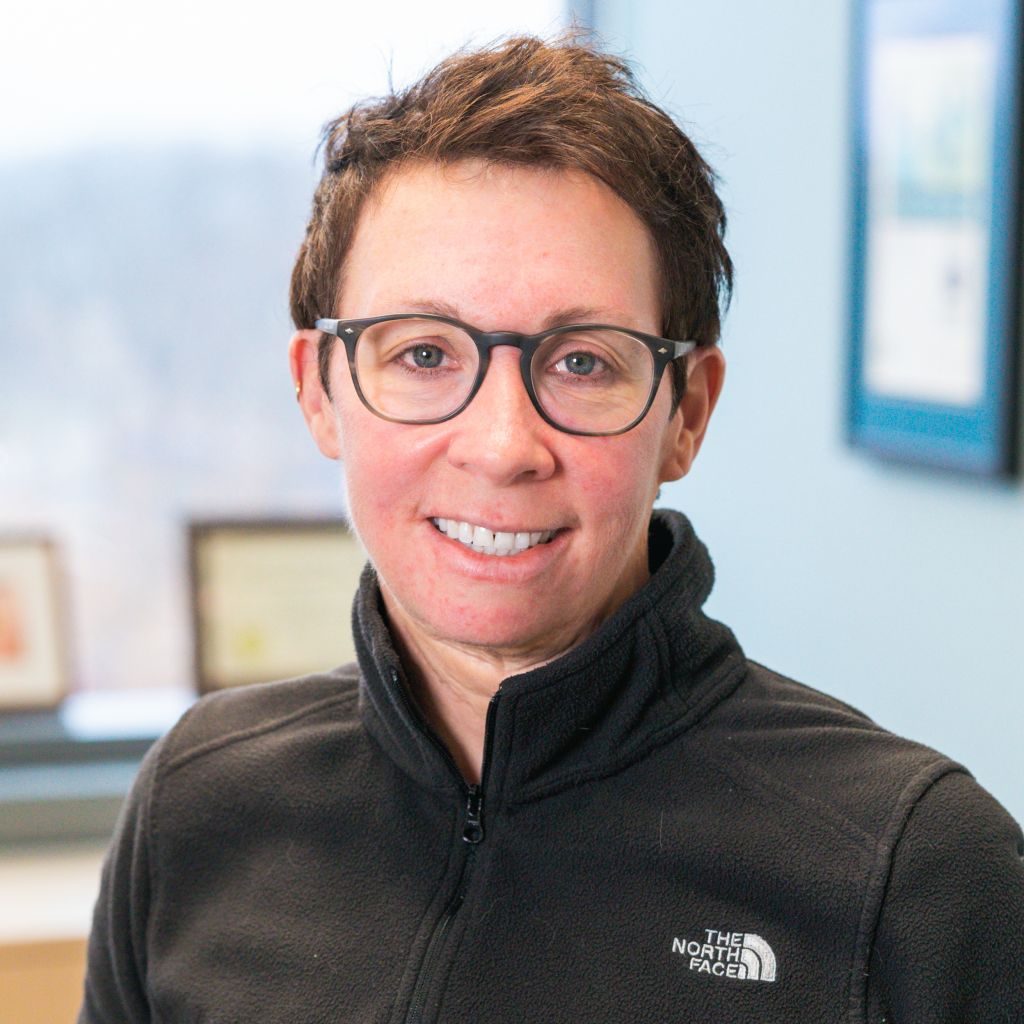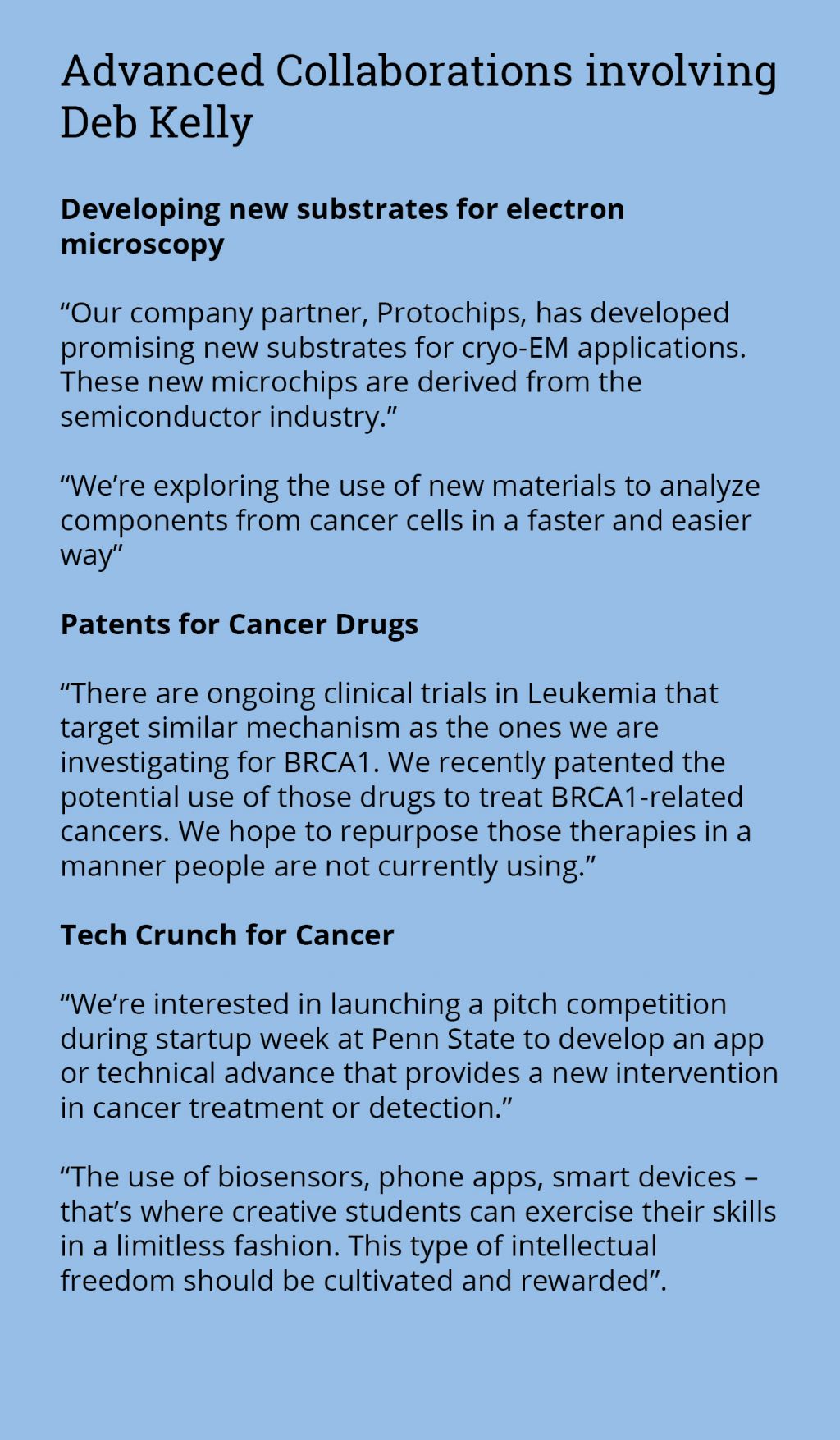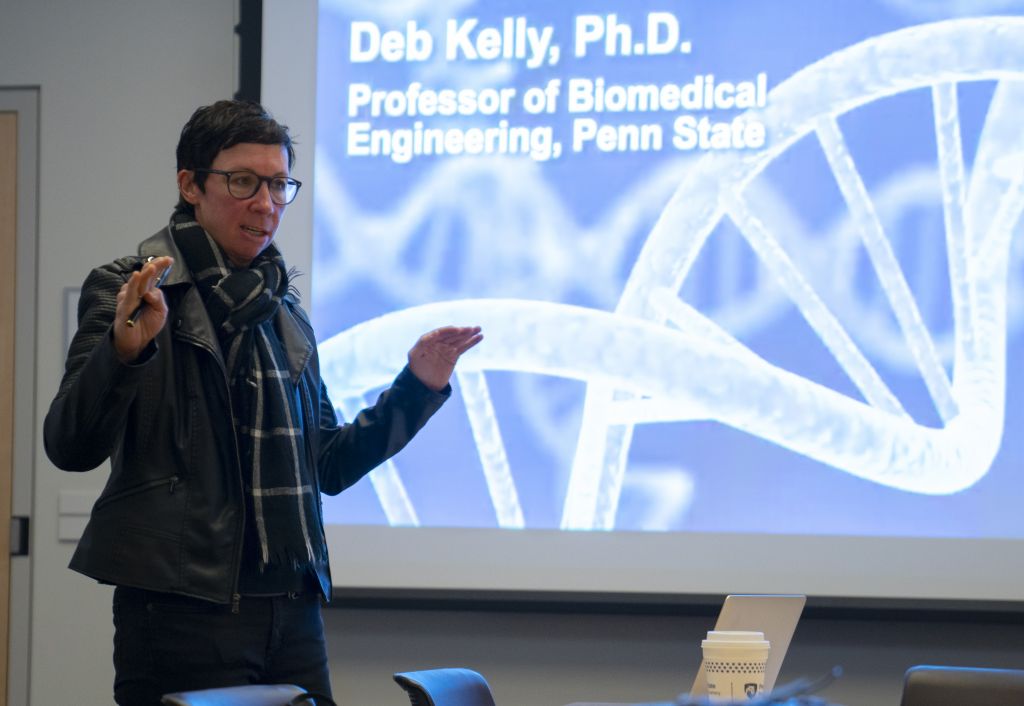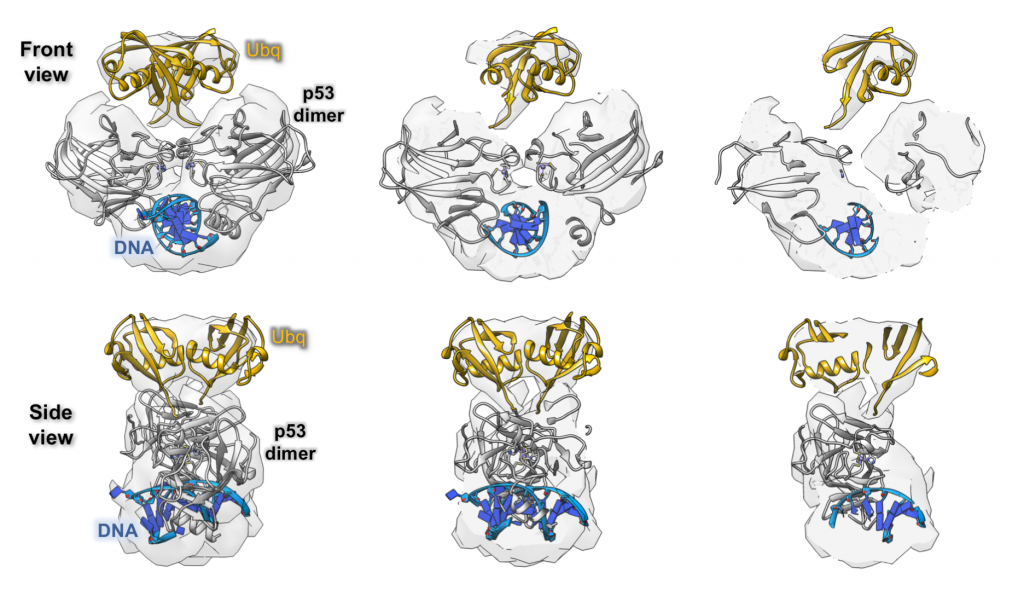Trailblazers: Deb Kelly Takes Cancer Fight to the Molecular Level

Deb Kelly, professor of biomedical engineering and director of Penn State’s new Center for Structural Oncology, examines cancer-causing processes at the atomic level. Her innovative approaches use a combination of structural and functional tools to investigate how cells communicate with each other.
Kelly’s new center was established in early January 2019 when she and her team moved up from Virginia Tech. It brings together faculty from different areas whose work is related to understanding the molecular culprits of cancer. This synergy capitalizes on cryogenic electron microscopy (cryo-EM) technology as well as other tools for structural biology analysis. Cryo-EM is an ideal technique to visualize protein assemblies at sub-nanometer resolution.
“Protein receptors found on the surfaces of cells transmit signals from the external microenvironment into the cell’s nucleus to turn on genes at the appropriate time. Poorly transmitted signals between cells or within cells result in a myriad of diseases including cancer. We would like to better understand how these signaling mechanisms drive tumor initiation,” Kelly said.
Acting as the blueprint of life, genetic materials within cells define how they work and operate. They are also subject to a wide variety of stressors that can degrade their ability to function. In healthy cells, the daily rate of damage to the genetic code equals the daily rate of repair. But when the rate of damage outweighs that of repair, things go wrong and disease-causing processes ensue.
Kelly’s focus is looking at BRCA1 (BReast CAncer susceptibility protein) and p53, which normally act as tumor suppressors, but will misbehave and eventually support the development of cancer if there are errors in their sequence.
“What’s so interesting about BRCA1 in particular, is that a lot of people have been looking at the sequence of the BRCA1 gene to predict which mutations contribute to breast cancer. That's why it's called a susceptibility gene,” she explained. “But those are just probabilities with predictions similar to a flip of a coin. What is making it flip to breast cancer or not? What's flipping that coin? What we've determined is that you might have some genetic mutations, but some people with those mutations get breast cancer, and some people don't.”

Kelly is interested in the mutations in these tumor suppressors that enable them to suddenly start misbehaving, as well as the breakdown of hormones such as estrogen that creates reactive oxygen species inside of cells. When there's cellular stress, such as oxidative damage from the breakdown of hormones like estrogen, and there are some genetic issues in the background, they can all affect the BRCA1 gene.
“We want to understand, how is this process happening? What factors result in breast cancer or not, so you can have a better predictive measure. Women living with these mutations should not have to go through extensive surgeries to change their bodies or live with the threat of not seeing their children grow up. If we can have a better understanding of which mutations are going to have an effect and which ones aren't, that would greatly advance our knowledge of BRCA1’s role in cancer development,” she said.
Kelly is also exploring how changes in the BRCA1 gene translate down to the protein level. Researchers first discovered what the full-length BRCA1 protein looks like using cryo-EM.
“We determined that when BRCA1 is mutated, it's not just the mutation that's changing the protein, it's the way the cell is reacting to the mutations under stressful conditions,” Kelly said. “And when the cell is reacting to mutated BRCA1 and it's very stressed out, it reads things improperly. It misconstrues its duties, and tags the BRCA1 protein for destruction.”
As the BRCA1 protein is destroyed, tumor suppressor levels drop, and the balance between DNA repair versus damage is thrown off. Disease will ensue particularly at times in which women are having high surges of hormones and estrogen, the inappropriate breakdown of which leads to cellular stress and oxidative damage. As mutations in BRCA1 are causing the cells to react differently to them and causing their own self-destruction, they lose the capacity to operate as a proper tumor suppressor to prevent cancer.
Kelly explained this process. “When we discovered that BRCA1 is being targeted by a “seek-and-destroy tag”, we removed that tag and found that BRCA1’s duties can be restored to nearly healthy levels. By better understanding these steps, we can envision corrective measures for BRCA1-related diseases.”
Kelly started by looking at the most caustic mutation in BRCA1, the one that has been identified as a cause of breast cancer 100% of the time.
“We saw this very tragic tag added to BRCA1 in cancer cells, but we were able to correct the inappropriate tagging system,” she explained. According to Kelly, “if we know this modification is limiting the positive role of BRCA1 in cells, tweaking this procedure may lead to an important new intervention.”

Kelly’s lab is tightly focused on molecular images and data to provide key insights. “We look at small things in a big way,” she said. “We're examining these small changes, these minuscule details, that have large impacts on downstream mechanisms.”
The potential promise of understanding these impacts is enormous. “If we can make BRCA do its job better, we can restore its capabilities as a tumor suppressor.” Kelly noted. The result could be an early preventive measure and better disease management for BRCA1-related cancers.
These cancers are very invasive and very aggressive, historically affecting young women and minorities. Not many specific therapies have been developed for them, and the outcomes of those are just barely extending life, tragically leaving people still very sick.
Kelly’s approach to cancer looks at it from the other side of the cell. “Why is something going wrong and what can we do to fix it? That's where we're making an impact. Can we tweak key players to make BRCA1 more stable? If we can tweak it to stabilize DNA, since cancer is a genetic disease, we'd like to combat the disease early on before it even gets to a deadly point for women.”
“Essential to our research is different types of microscopes, different types of chemicals, and drug testing in cells. We harvest protein culprits and study their attributes using cryo-EM. We seek to understand ‘What are they that doing? Can we fix them? Can we kill them, if need be?’ So that's why we claim to look at small things in a big way, and the concept behind structural oncology.”

Kelly’s work involves deep collaboration with multiple departments and facilities, including researchers at the Huck Institutes of the Life Sciences and the Materials Research Institute. Her industry partner, a company named Protochips, fabricates custom-designed microchips that Kelly’s team uses for electron microscopy analysis. “A lot of our work is truly at the intersection of life sciences and materials research,” she said. “Having the ability to do that in a building like the Millennium Science Complex was very attractive to me when I was interviewing and deciding to move my team up here.”
Wrapping up her first year at Penn State, Kelly has set her sights on two big initiatives for 2020.
First, she wants to spearhead a Penn State “Tech-Crunch Cancer Edition,” which she envisions as a pitch competition among students, graduates, and undergraduates to develop an app or some sort of computational technological intervention in the cancer space. Penn State’s College of Engineering is working up a biosensor initiative that she hopes to tap into for yet further collaborative explorations.
Second, inspired by the work of Dr. George-Lucian Moldovan at the Penn State Cancer Institute, Kelly is working with the Moldovan Lab to develop a CRISPR Cancer Consortium of Patient Origins, which they have playfully named C3-PO. The team hopes to convene a consortium of people to help advance gene-editing technologies at the university and across the medical campus to synergize people around that technology.
“There’s so much that can be done across disciplines,” Kelly enthused. “You can find the right group of motivated people, and they just go at it. It’s fantastic. That’s part of what’s great about being a biomedical engineer; you can do bio stuff and medical stuff and high-resolution imaging. It cuts across many different aspects of science, and, yeah, my team and I are very pleased to be here.”